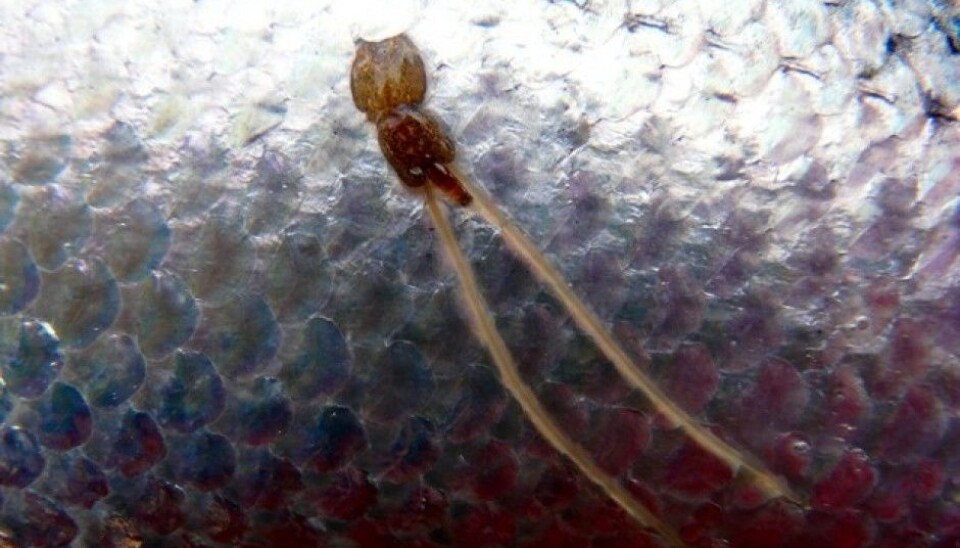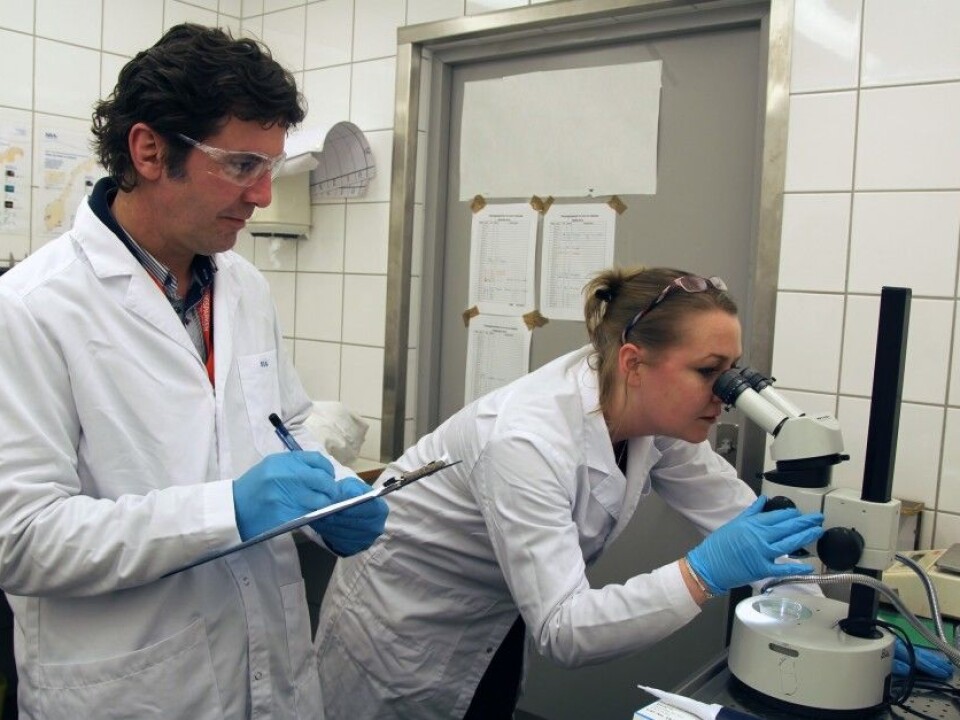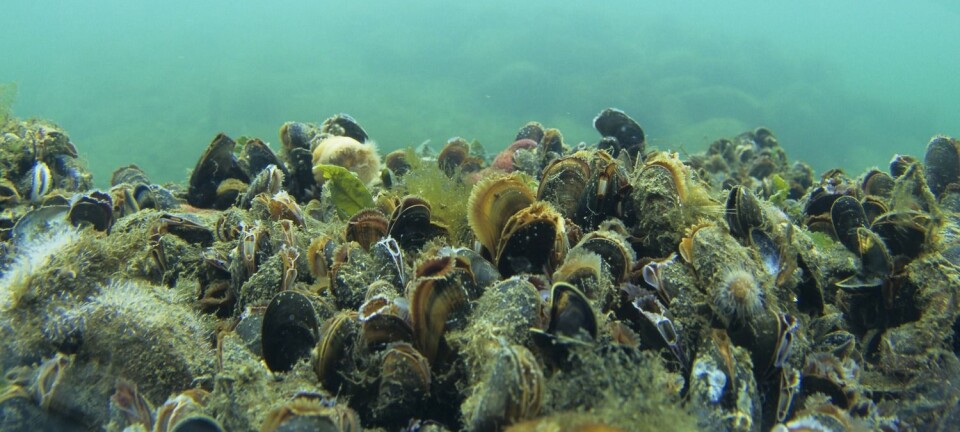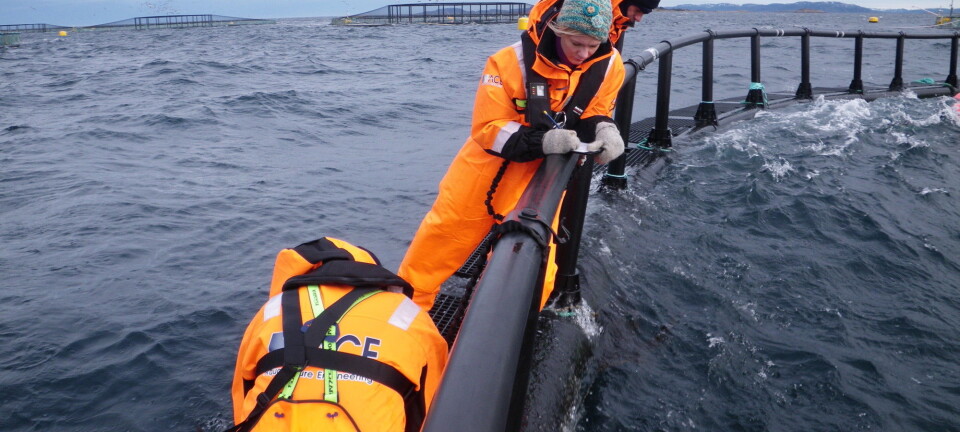An article from NIVA - Norwegian Institute for Water Research

Medications used in aquaculture should get better scrutiny
Scientists think current evaluations of the risks of chemical substances to combat salmon lice fall short when it comes to long-term effects.
Denne artikkelen er over ti år gammel og kan inneholde utdatert informasjon.
Aquaculture is a globally important food production industry which has over the past years shown major growth. A major challenge for salmonid aquaculture is the infestation of salmon lice, and the use of pesticides is often vital to control these ectoparasites.
In a recently published article, three scientists from the Norwegian Institute for Water Research (NIVA) express their concern for whether or not current environmental risk assessment data requirements are sufficient for all aquaculture medicines.
Environmental consequences
- With the emergence of resistant salmon lice strains there may be a greater risk to non-target organisms from treatment regimens needing to be more aggressive in order to delouse the fish. In combination with the attempt to control salmon lice levels, the possible environmental impact of the treatments on non-target organisms is of concern, says Adam Lillicrap, researcher in NIVA and first author of the article.
Veterinary medicines used in aquaculture are strictly controlled with marketing authorizations issued on a country by country basis. To obtain a marketing authorization, guidelines developed by the International Cooperation on Harmonisation of Technical Requirements for Registration of Veterinary Medicinal Products (VICH) need to be followed. VICH is a trilateral (EU-Japan-USA) programme aimed at harmonising technical requirements for veterinary product registration. Although the guidelines relating specifically to environmental hazard and risk assessments are a strict obligation for regulatory authorities, the ecotoxicity tests that are required may not always be completely relevant for specific substances.
Three measures
The Ministry of Trade, Industry and Fisheries of Norway in collaboration with the Norwegian Seafood Federation and the Norwegian Seafood Association, recognize the challenges within aquaculture and the potential environmental consequences of the use of veterinary medicines.

Subsequently, in an attempt to alleviate the environmental impact of aquaculture processes within Norway, the following three measures have been implemented: whole or partial withdrawal of the licensing approval in locations where the problems are most pronounced; review and monitoring of internal systems for salmon lice and veterinary medicines used by industry; and increased supervision of the use of veterinary medicines. How these measures will be implemented in practice or the affect they will have on the environmental impact of veterinary medicines is currently not clear.
- It is our responsibility as environmental scientists to help protect the environment from adverse effects of chemicals, Lillicrap says.
- The question is whether current environmental risk assessment data requirements are sufficient for all aquaculture medicines? In answer, standard acute and chronic ecotoxicity data may be appropriate for assessing the environmental hazards of a large number of substances.
However, it is clearly not sufficient for substances that specifically affect certain organisms or where hazards may not be predicted based on standard environmental hazard assessments alone.
Lillicrap is among the authors behind the paper referred to on niva.no in March this year, where they found that environmental risk assessments of certain veterinary medicines in aquaculture may underestimate the effects on non-target crustaceans.
- Forthcoming improvements in environmental safety of aquaculture medicines needs research initiatives towards the new paradigm for risk assessments. This involves incorporating higher-tier and sub-individual testing, development of toxicokinetic/toxicodynamic models, understanding ecologically relevant mechanisms and generation of ecological predictive tools, Lillicrap says.
However, these are seen as long term goals which may be achieved within the next 5 to 10 years dependent upon species and ecosystems of concern.
- In terms of the short term ecological effects from the current practices within aquaculture, it is apparent that these efforts may be too late to provide sufficient protection to the environment, Lillicrap says.
Holistic approach
The authors of the article stress that these opinions are not intended to discredit current environmental risk assessment practices or the standard test requirements that are stipulated in regulatory guidance/legislation.
- Moreover, we feel these are a bare minimum requirement, and a more holistic, case by case approach focusing on specific endpoints relevant to the species of concern should be adopted in the future. Lillicrap says.
- In addition, there may be sufficient justification for revising the current VICH guidelines to be more in line with other regulations.
Higher demands, but also higher security
This may result in supplementary non-standard test data being requested during the marketing authorization procedure but, less, well targeted approaches for certain groups of substances will ultimately provide greater protection to the environment than multiple standard acute ecotoxicity data alone.
- To that end, we encourage regulatory authorities and industry to seek guidance, and to engage in dialogue on how to assess substances more appropriately, based for example on the specific mode of action, and by using more suitable hazard assessment strategies than are currently being applied, Adam Lillicrap concludes.
-------------------------------------
Read the Norwegian version of this article at forskning.no
































